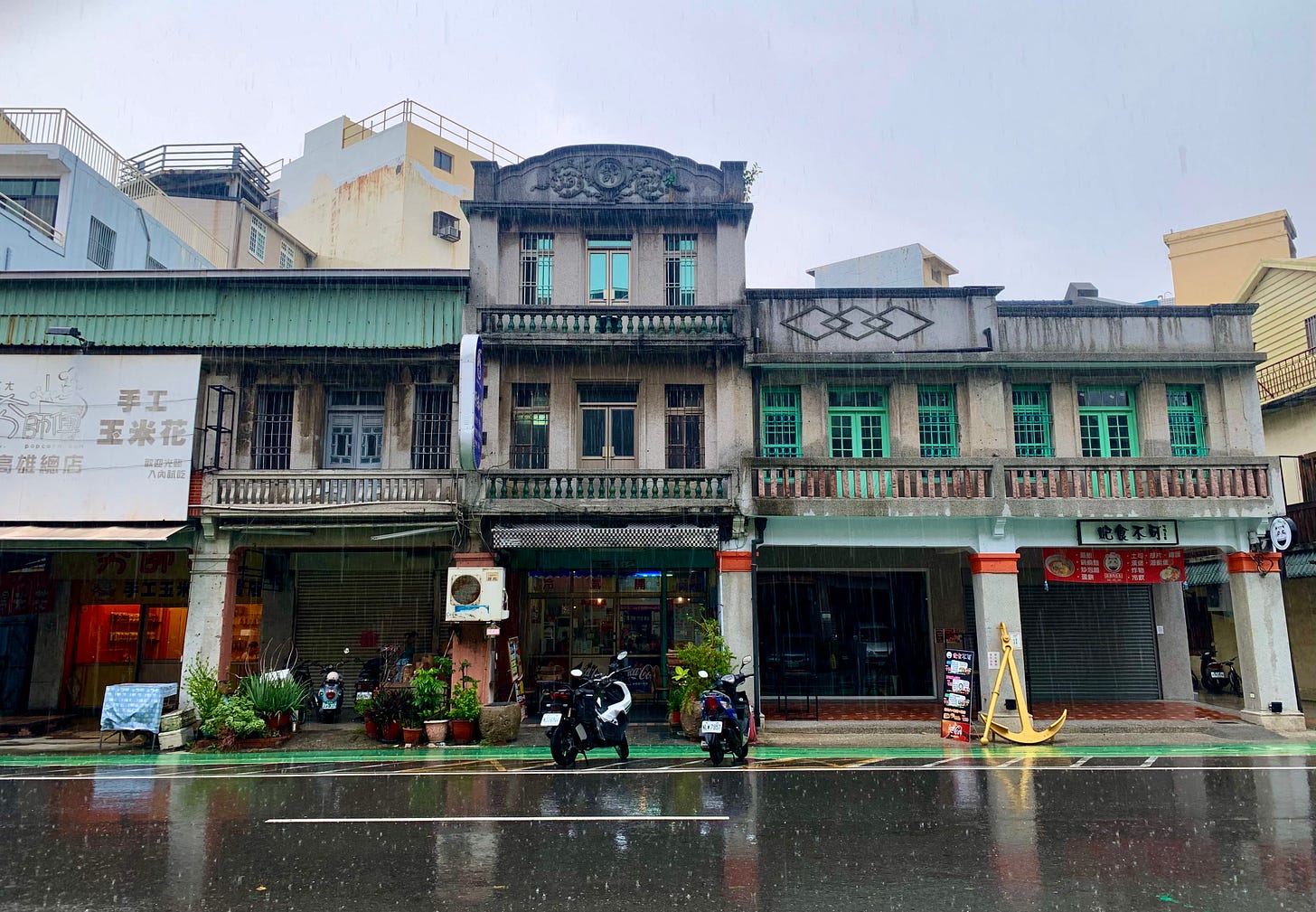The Pedestrian Perspective
In this article I will be describing what Taiwanese cities look like from the perspective of a pedestrian. Now, before you write this article off as irrelevant or boring (because why would anyone be interested in something so mundane as walking in a city), let me assure you - being a pedestrian in Taiwan is no picnic. If I would not have found the experience of a pedestrian noteworthy and representative of Taiwanese culture, I would not have have written this blog post. As it is, the sights one sees, the aromas one inhales, the dangers one must avoid: these things make the experience of the pedestrian here quite unique. I will discuss what getting from one point to another involves - the infrastructure for pedestrians - and the views and dangers one is exposed to while commuting.
Fresh out of the Netherlands, I am used to neatly organised infrastructure for transportation. There is the bike lane, the pavement, and of course the road. Not so in Taiwan! One must keep their eyes peeled at all times; one risks their very life if they decide to follow the Parisian style. Jaywalking is the easiest way to end up in the hospital. Now, in Taiwan, in theory, each mode of transportation also has its own designated space. In practice, it is anything but.
The space for pedestrians often comes in the form of a qi-lou. Qi-lou’s originated in southern China under the influence of western intrusion during and after the opium wars. In the early 20th century, after certain western powers forced Chinese ports open, the mixing of Chinese and western architectural styles began. Importantly for pedestrians, the building style I am referring to features a ground floor that is pulled inwards away from the road. Consequently, all floors above the ground floor extend above the empty space created by the drawn in first floor. Such an arrangement creates a sheltered walking space shading pedestrians from the scorching sun or the pouring rain. The design is rather ingenious, however, the Taiwanese adaptation of the qilou is at times contestable. To see why, view the pictures below.
The reason it is contestable is because qi-lous are often repurposed as parking areas for motorcycles, cars, bikes. It is also not rare for the space to be taken up by a food stall or an outdoor kitchen. I have also seen these spaces being used as outdoor store extensions. In other words, these spaces end up being used by anything but pedestrians; pedestrians are pushed out onto the street. And the street in Taiwan is particularly dangerous. The authorities have tried to make it better by painting a green ‘walking’ lane onto the street called the renxingdao, but whether that has made a difference is still out for the jury. The picture below features a street made for all types of transport, pedestrians included.
Not to say that it is applicable to most cases, but local friends have told me that a driver’s license in Taiwan is exchangeable for a drumstick. That is to say, the standards for obtaining a drivers license are very low. Judging from what I’ve seen, that seems to be quite accurate. This does not add to the safety of streets: the areas pedestrians are often limited to. Besides cars, motorcycles perhaps are as frequent as cars here. So one must keep an eye out for cars, motorcycles, bikes and public transport all jammed together in one space. Given that no one seems to be particularly upset about it, I am led to conclude that navigating such a perilous space is an essential Taiwanese skill. It is something that one learns as a child in much the same way as Dutch children learn to bike (without helmets). In fact, one of my Taiwanese friends once remarked that they were relieved to be back in Taiwan, that they found walking here a much safer experience than in NL. What counts as safe, then, does not so much depend on the infrastructure outside, but rather on the skills one has picked up. Safety is embodied, not externally constructed.
Qi-lous thus present a mixture of western and southern Chinese influence. If one lifts their eyes to study other buildings, one quickly finds that the citsycape is a collage of different styles coming from different periods. Modern highrises are juxtaposed with old, blockish apartment buildings. Contemporary architecture, featuring lots of steel and glass, strikes a sharp contrast with older Japanese buildings. The old and the new, the avant-garde and the old-fashioned mingle and mix in Taiwanese cities. It is because of such an eclectic cityscape that I have concluded that the distinctive ‘style’ of Taiwanese cities can be described as ‘haphazard collage’.
Addmitedly, the description above cannot be applied to all cities of Taiwan. Qilous in Taipei are actually meant for pedestrians (they are not blocked). There are districts within each city with only one particular style. The pavement does exist in Taiwan. The reason I decided to write about the pedestrian experience is because it struck me as so different from that of the Netherlands, Latvia, and other countries I’ve been in. This amplified my experience of being abroad. How one gets around is different in each country and city. And that experience of getting around in part defines what a city feels like. One gets to know what Taiwan feels like equally well from a walk around the block as from a visit to an old temple. The street is not a neutral canvas.








